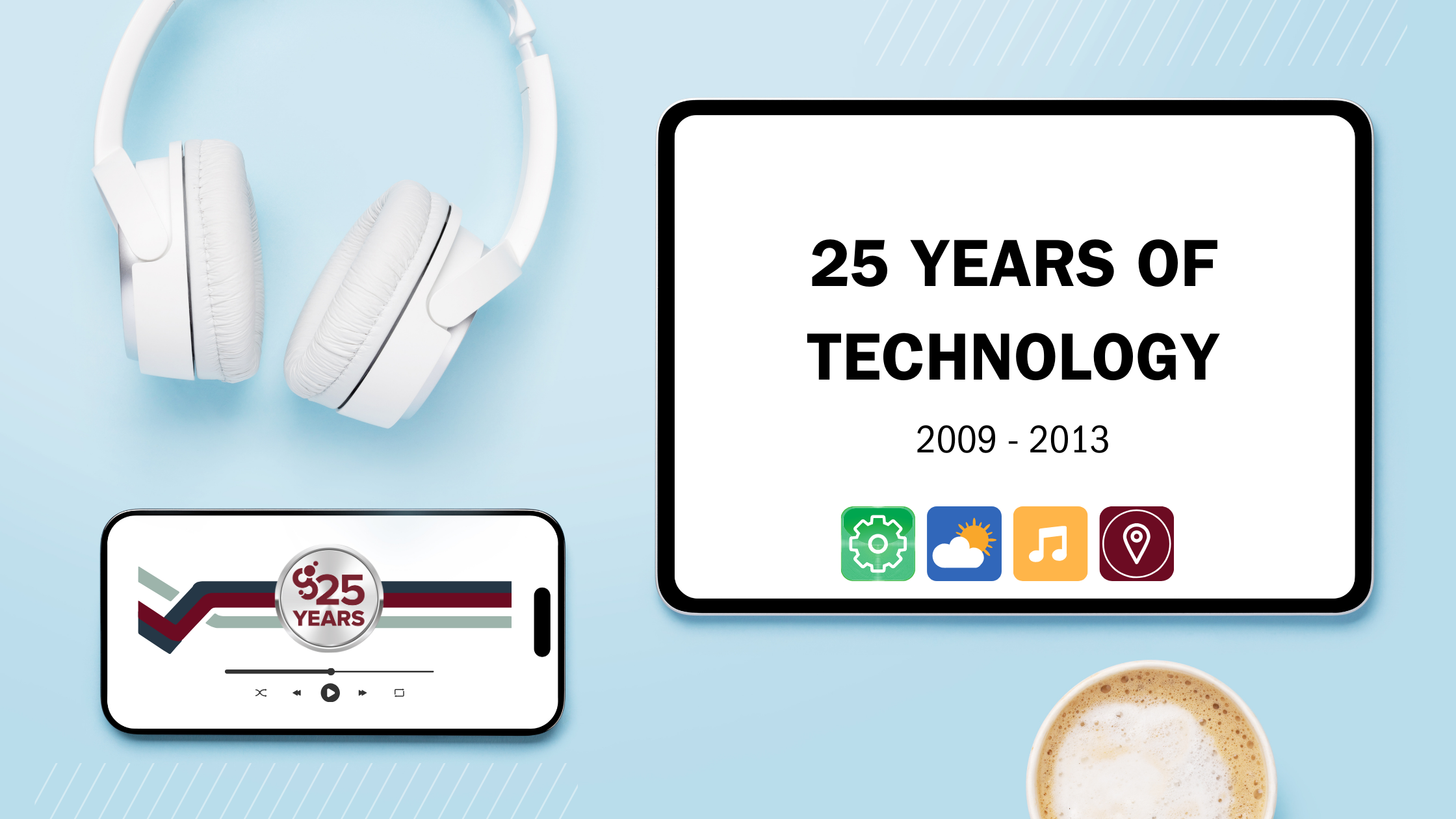This is the third article in our series highlighting the technological breakthroughs that shaped healthcare, marketing, and our work at Geonetric over our first 25 years in business. Read the first articles, which cover 1999 – 2003 and 2004 – 2008.
As Geonetric entered its 10th year in business, the online landscape had evolved rapidly to something that barely resembled what it was when we were first founded.
People were chronicling their lives and forming communities on social media, online reviews were changing how consumers interacted with their healthcare providers, and smartphones put the power of search engines in users’ pockets.
Easier access to search engines on the go meant marketers needed to put more thought than ever before into how users found their websites, and what they saw once they clicked through.
2009
In 2009, Google launched its Real Time search functionality, which automatically incorporated the latest results for a keyword in a dedicated section of the search results page.
Real Time didn’t simply funnel any new post or page into its results — Google’s search ranking algorithm still came into play there — but it marked another step forward for search engines’ ability to offer users the latest answers instantly.
2010
The accessibility of smart devices continued to grow in 2010 with the launch of Apple’s iPad. While not the first tablet computer, the iPad’s innovative touchscreen helped set it apart and paved the way for smart devices that had characteristics of both a laptop computer and a phone.
Geonetric launched one of the first responsively designed sites in healthcare, and to this day, we design and build responsive websites for all screen sizes so healthcare organizations’ sites look fantastic no matter how users visit them. This is especially important in 2024, with 92.3% of internet users accessing websites on a mobile device, compared to 65.6% who use laptops or desktop computers.
Azure, Microsoft’s cloud computer platform, was also released in 2010. Today, its broad range of services includes analytics, virtual computing, networking, storage, and more to help organizations manage their technology tools.
2011
Schema markup, or structured data that helps search engines better understand a webpage’s content, was first introduced in 2011. While it doesn’t have a direct impact on search engine performance, it can help websites stand out on results pages by displaying rich content like images, star ratings, publish date, and other important information about the page.
“[It was] the idea that in addition to just having content on the page, you would also try to spoon-feed the search engines a little bit about what this page is about,” explained Geonetric CEO Ben Dillon.
For example, a search result for a recipe may bring up photos of the finished product, how people reviewed that recipe, the number of reviews and cooking time. A search for a pair of shoes might deliver the price, the buyer rating, if the shoes are in stock and how long a delivery would take.
Apple also launched its Siri voice assistant in 2011, kickstarting a shift toward voice search and the need for marketers to think like a voice searcher when creating content. Less than a decade later, 41% of adults reported using voice search daily.
2012
Content marketing wasn’t exactly a new concept, but by 2012, it had reached a tipping point where it was an essential component of any successful marketing program.
This shift was driven in part by social media, search optimization, and users’ desire for content that supports their purchases. Many organizations took this time to capitalize on consumers’ trust in content over direct advertising by dedicating entire departments to content marketing.
2013
In 2013 Google made major changes to its Hummingbird search engine algorithm, marking the most significant changes to the way it delivered search results since 2001. This update placed more of an emphasis on natural, conversational-sounding searches and the context around them than individual keywords.
For marketers and website developers, this update required a move toward more “human” writing and website navigation that didn’t rely on forced keywords.
“It seems like a never-ending thing to figure out — how do we play with this tool that is realistically the home page for all of our sites?” said Geonetric CEO Ben Dillon. “More people are starting at Google than are starting at the home page of our healthcare websites when they’re engaging with that content.”
Healthcare websites were not impacted as significantly as other industries since many organizations were already favoring educational content over keyphrase-packed articles, Dillon noted.
“Healthcare sites have been a little less volatile around algorithm changes than some other industries that went further down the pathway of sacrificing elements of readability or understandability or experience in order to get more SEO,” Dillon said.
What’s next?
Our 25th anniversary technology blog series continues in two weeks, covering 2014 through 2018 and the “mobile-first” movement.
Looking to get in on the ground floor of the latest marketing technology trends before they take off? Our expert team at Geonetric is here to help!
We’ve assisted healthcare organizations in creating marketing programs that stay ahead of the curve for 25 years. Let us help your team prepare for the next 25 — contact us today to get started!

